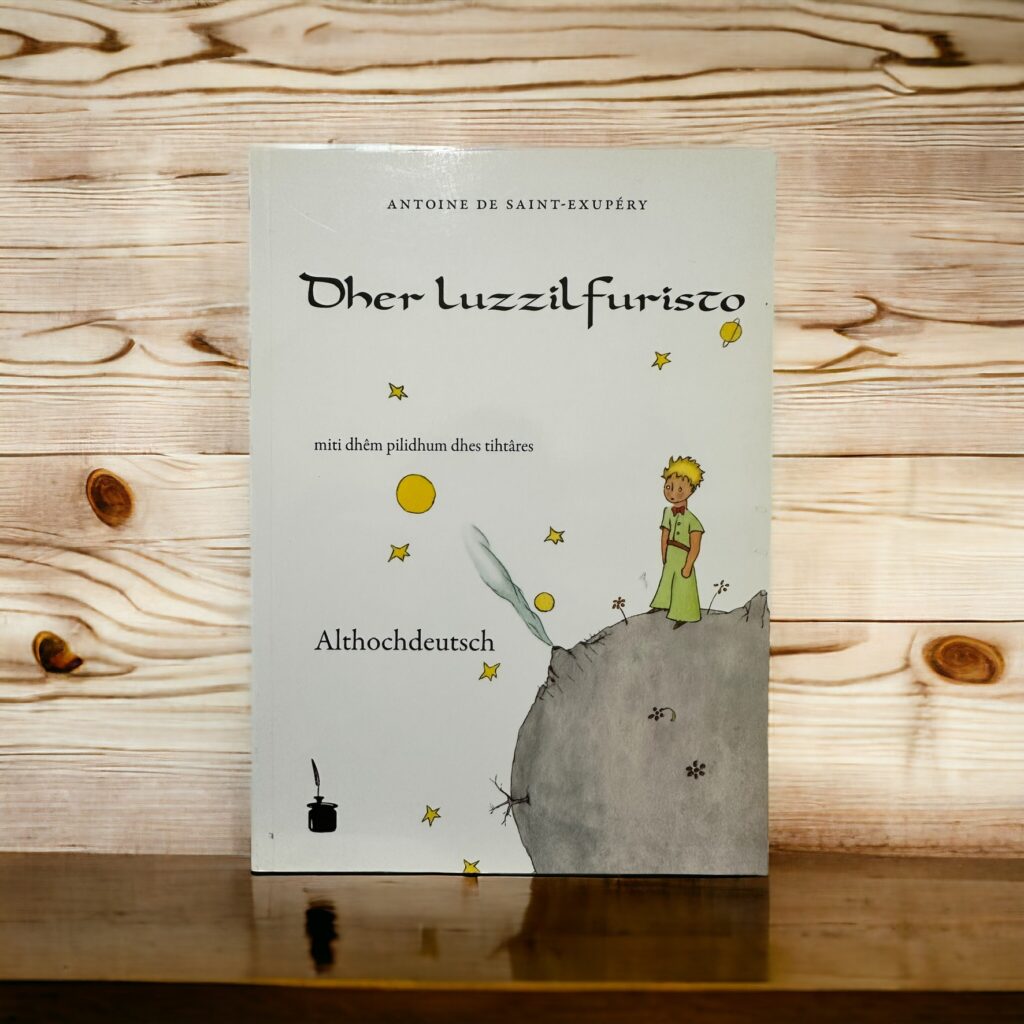Dher Luzzilfuristo — in Old High German (Althochdeutsch).

Old High German (OHG) is the earliest form of the German language, spoken from around 500 to 1050 CE. It marks the first distinct period in the history of the German language and precedes Middle High German, which in turn evolves into Modern High German. Old High German encompasses a variety of dialects, which were spoken across the regions that are now Germany, Austria, and parts of Switzerland. These dialects exhibit significant diversity, reflecting the tribal and regional divisions of the time.
OHG saw the beginning of the Second Sound Shift, also known as the High German consonant shift, which distinguished High German dialects from other West Germanic languages. This shift involved several phonological changes, such as the turning of voiceless stop consonants into affricates or fricatives (e.g., p to pf or f, t to ts or s, k to ch).
OHG grammar was highly inflected, with four noun cases (nominative, accusative, genitive, dative), three genders (masculine, feminine, neuter), and strong and weak verb conjugations. The complexity of OHG grammar resembles that of Latin and Old English, with significant use of declensions and conjugations.
The vocabulary of OHG was predominantly Germanic, although it included loanwords from Latin due to the Roman Catholic Church’s influence and from the Celtic languages due to earlier contact. Over time, as Christianity spread, more Latin-based religious, administrative, and scholarly terms entered the language.
Old High German literature and documentation are sparse compared to later periods. The surviving texts are mainly religious (translations of Christian texts, prayers, hymns), legal documents, and a few literary works. Notable texts include the “Abrogans,” a Latin-German glossary that is the earliest known OHG book, and the “Hildebrandslied,” a heroic lay that is among the earliest vernacular literary texts in German. The “Muspilli” and the “Old High German Tatian” are other significant examples.
OHG dialects are generally classified into four main groups: Alemanic (in what is now Switzerland, Southwestern Germany, and Alsace), Bavarian (in Austria and Bavaria), Franconian (in the regions of Franconia, Hesse, and parts of the Rhineland), and Saxony (in Northern Germany). Each of these dialects contributed to the development of Middle High German and, by extension, the modern German language.


